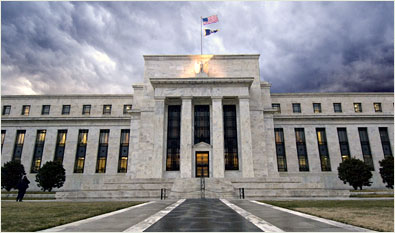
Fire Insurance and the markets- Update 11 9 2019 READ!

Market update and more fire insurance information:
Greetings fans,
Read on about fire insurance and what is happening under the surface on Wall Street. Both important machinations in process!
Don't let this cost you. Insure now with a licensed agent
Marc Cuniberti California Insurance License # 0L34249
273996
Fire Insurance.
The very mention strikes fear in the hearts of homeowners. With the recent catastrophic wildfires wiping clean whole neighborhoods, an unprecedented situation has arisen not only in the scope of the destruction by those affected, but in the environment that California homeowners find themselves in obtaining fire insurance to protect their residences and businesses.
Facing skyrocketing claims at saturations levels seldom witnessed, insurance companies are pulling back their exposure to high fire prone areas by cancelling in masse’ homeowner policies.
Nevada County’s beauty comes from being surrounded by trees and brush and its the very reason for cause of its insurance problem.
Home and business owners are finding cancellation notices arriving in their mailboxes. Regardless of loyalty or claims history with a company, the notices keep coming with seemingly no consideration for any other factors. Basically if you live here and home happens to be in a designated brush area, expect a cold hearted sounding letter to arrive in your mailbox.
Few have been spared. Regardless of the amount of tree work you’ve done, or open space that surrounds your house, if you’re on a specific spot on the map (and there are many such spots) you’re probably going to be scrambling for a fire insurance policy.
With such wide spread problems, there is likely to be misinformation, wild claims and exaggerations, some name calling and a host of upset homeowners.
And there are.
The basic question now being asked is where can I find fire insurance and how much will it cost?
The answer can be distilled down to a simple answer for most. You will be able to find a policy somewhere and yes, it’s probably going to cost you more. In some cases a lot more.
As in any screwy situation like what exists currently in the homeowner’s insurance arena, there is no steadfast rule as to what to expect. As a licensed insurance agent, and one deeply entrenched in social and news conduits, I have seen little that resembles normalcy. I can say the stories run from ridiculous to unbelievable to situations that almost appear almost like little has changed.
Some claim they can’t get any insurance at all (usually untrue) to claims they actually paid the same or even less than before (usually untrue as well).
From recent my experience, and probably like almost all agents in Nevada County and California for that matter, the intensity of the situation is as new to us as it is to you. The phones are ringing nonstop as consumers scramble for coverages.
Experienced agents know coverage is possible for most but that coverage is also going to cost more. In many cases, I see costs rising from 200-250% of previous premiums. Those claiming their premiums stayed the same or went even down may not have looked at their coverages closely.
It’s a rapidly changing environment. The common belief is the insurance companies are immersed in a Frankenstein-like confusion of an untenable situation. Some say it’s all one big grand experiment in what has to be done and what will be done forced upon all of us by necessity caused by the workings of Mother Nature.
The questions being when you get a policy (usually not if), how much will it cost and what sort of coverage will I get. If God forbid my house is obliterated in a catastrophic fire like the ones witnessed in recent years, will the insurance companies be able to handle the onslaught of claims in a timely and efficient manner. These are questions that are difficult to answer.
Lord knows the insurance companies, much like the agents, are bombed with fire policies applications. They are also bombed with claims. Having to settle hundreds of homeowner claims as whole communities get incinerated is no easy task, and likely not a cheap one for the insurers. Hence the cancellations.
Remember insurance companies, like most companies, exist to provide a service and make a profit in doing so. If the profits burn up in a wildfire along with the homes they insure, they are within their rights to pull back from the market. In other words cancel you.
The good news is there is an entity called Cal Fair. From Google: “The FAIR Plan is an association located in Los Angeles comprised of all insurers authorized to transact basic property insurance in California”
In other words, Cal Fair is made up of many of the same companies that cancelled you but assembled in conjunction with the Department of Insurance to provide insurance that otherwise is not available. Much like the assigned risk program for problem drivers, you could say Cal Fair is for problem home policies, and in this case the problem is wild fires.
I’ll cover how Cal Fair works and the subsequent coverage issues in future articles. Just know for now, you will likely have little problem in getting a fire policy. Contact a licensed insurance agency for assistance and yes, they are busy. If you find you’re not getting a call back, try another agency. There are a host of reputable agencies and agents in Nevada County that can help.
This article expresses the opinions of Marc Cuniberti and should not be construed or acted upon as individual investment advice. Mr. Cuniberti is an Investment Advisor Representative through Cambridge Investment Research Advisors, Inc., a Registered Investment Advisor. Marc can be contacted at SMC Wealth Management, 164 Maple St #1, Auburn, CA 95603 (530) 559-1214. SMC and Cambridge are not affiliated. His website is www.moneymanagementradio.com. Mr. Cuniberti is a licensed insurance agent. California Insurance License # OL34249

The "REPO" Market has recently seen some things not witnessed since the 08" crisis
269934
Since the 2008 crisis, the Federal Reserve injected somewhere in the area of 5 trillion dollars into the banking systems both here and abroad to help stabilize the financial `system` that was spiraling out of control due to the real estate implosion. They also guaranteed another 7 trillion or so (https://michael-hudson.com/2011/06/how-a-13-trillion-cover-story-was-written/) of debt from various institutions in addition to the injection.
It’s safe to say things have calmed down a bit since then, with the markets rising to new highs and the real estate market for all intents and purposes has taking off the to the proverbial races since 2011.
That said, last week witnessed a blast from the past in an area the average Joe Blow doesn’t really understand or even know it exists, the overnight repurchase agreements (repos) market mechanism.
The repo market is the plumbing of the financial system. The banks and market funds of all types rely on this market to finance their day to day operations. Billions of dollars flow into and out of this market daily. It’s where business and investment firms of all types draw on funds to operate, while others deposit excess funds for safekeeping and possible income. The market operates funding for as short as overnight to longer terms. From CNBC : In a repo trade, Wall Street firms and banks offer U.S. Treasuries and other high-quality securities as collateral to raise cash, often overnight, to finance their trading and lending activities. The next day, borrowers repay their loans plus what is typically a nominal rate of interest and get their bonds back.
Think of it as a huge octopus taking in and handing out thousands of loans a second to all branches of business and the markets.
If demand for funds increases, the interest rates paid for accessing these loans may rise. On the contrary, if demand falls off for this type of funding, interest rates might fall.
The interest rates on repos usually run about 2.25% and the baseline is set by the Fed. The repos typically follow the Fed set rate. Last week the repo rate (which is set by demand) rose to 4% then skyrocketed to 8%. Known as liquidity, it simply means the demand for quick cash was soaring. Higher than normal rates can cause serious turmoil as the cost to institutions rise past what is budgeted and expected. 8% is regarded as extremely high to put it mildly.
As rates climbed the Fed intervened injecting close to 53 billion dollars into the repo market by purchasing Treasuries and other debt (known as agency debt) from the various institutions known as “Primary Dealers”. This is a group of 24 big banks and trading firms that have an agreement to participate in swapping debt for cash and vice versa to provide acts like a gas pedal to the overall money supply in the system. The intervention was the first one since 2008. Ominous sounding, the recent repo rate rise was called “bordering on chaos’ by a BMO Capital Markets strategist.
The Fed sold debt back to the repo dealers (an opposite move from last week’s action) over many months last year to the tune of 700 billion in an attempt to rid itself of some of its holdings which were stockpiled during the crisis. The most recent move was a reversal of this mechanism.
This spike and subsequent move by the Fed doesn’t necessarily mean the environment resembles 2008/09 liquidity crisis but it definitely doesn’t make this analyst sleep any better. Only time will tell if the recent machinations by the Fed solved the problem and it was a simple one-off temporary occurrence or a sign of something more ominous going on in the financial gearbox of the economy.
Update: On September 18th, the New York Fed printed up another $75 billion to inject into the “repo” market — on top of $53.2 billion the day before. On September 26, the Fed added another 71 billion and I can’t keep up! It is getting more interesting by the day. Who knows how much more will be added by the time you read this?
UPDATE- November 9, 2019. Close to a quarter TRILLION has now been added by the Feds! Could this be a sign of more problems in the markets than we are being led to believe? This certainly is a very large sum of money!







